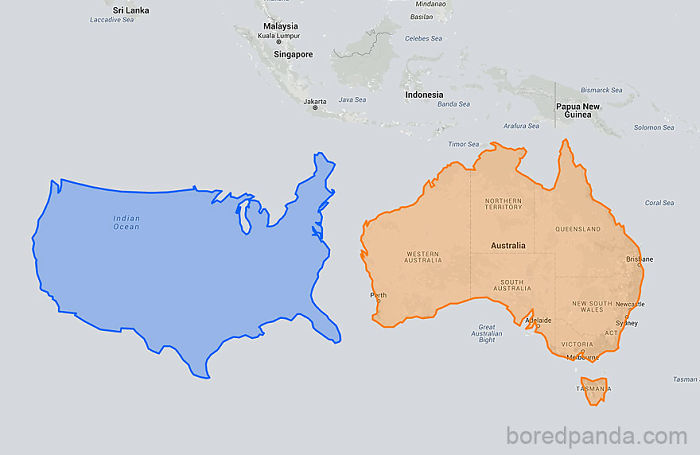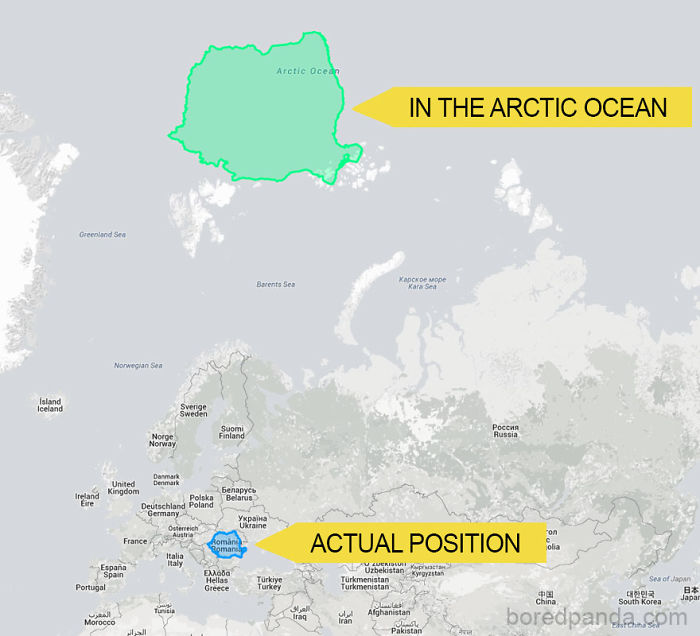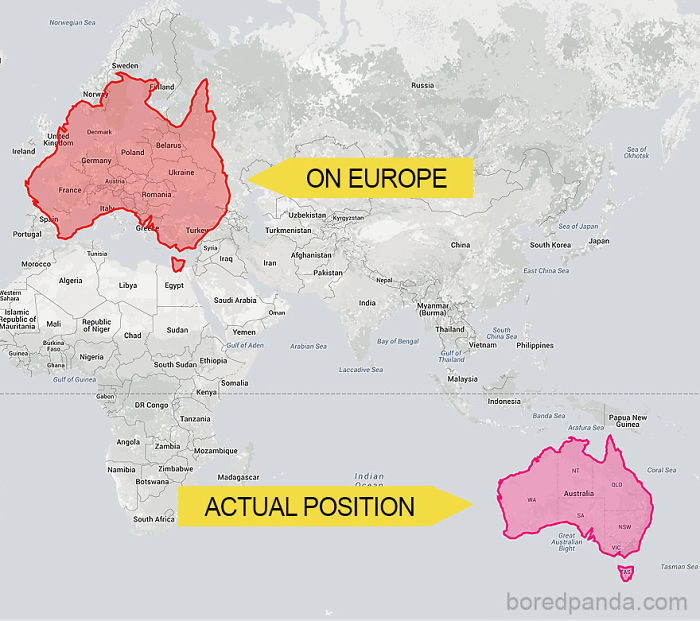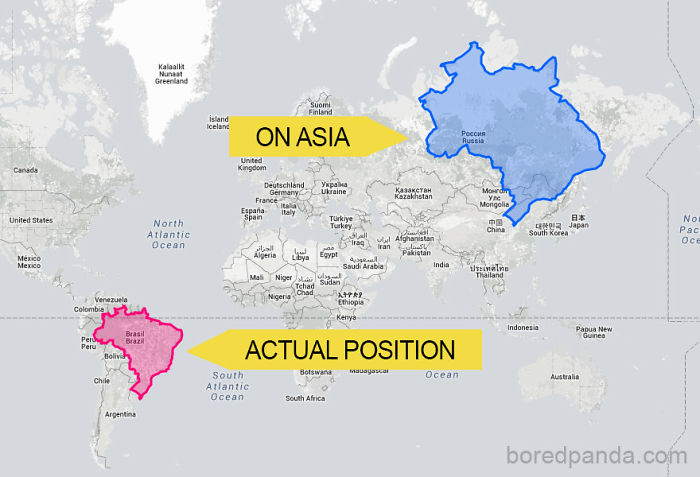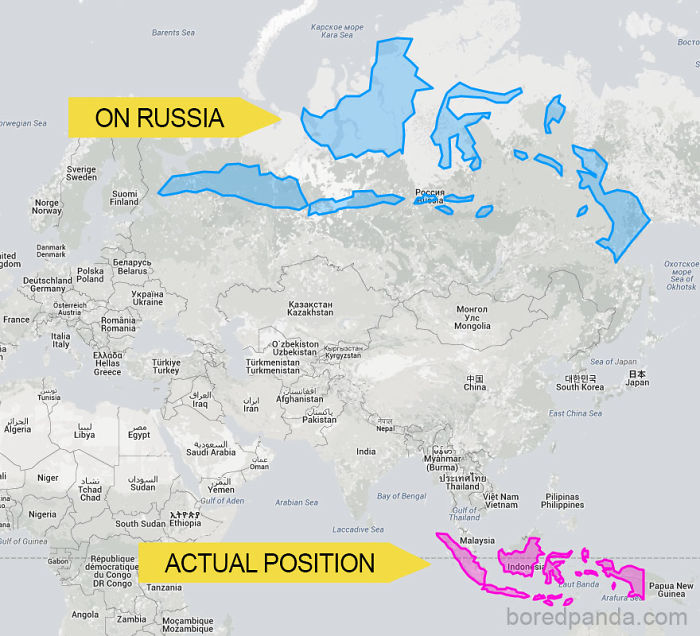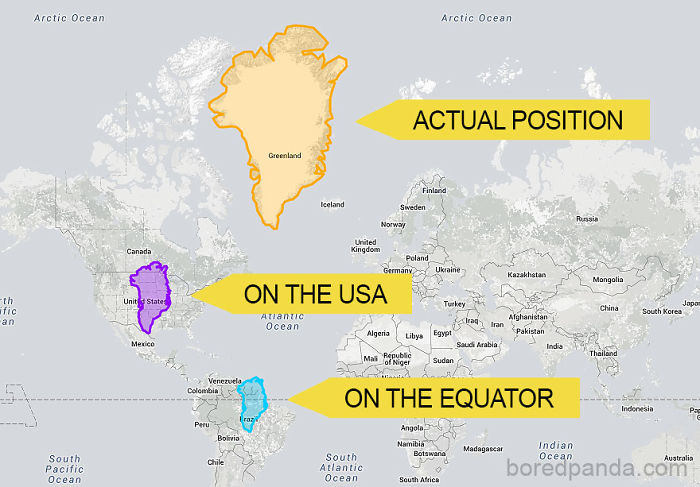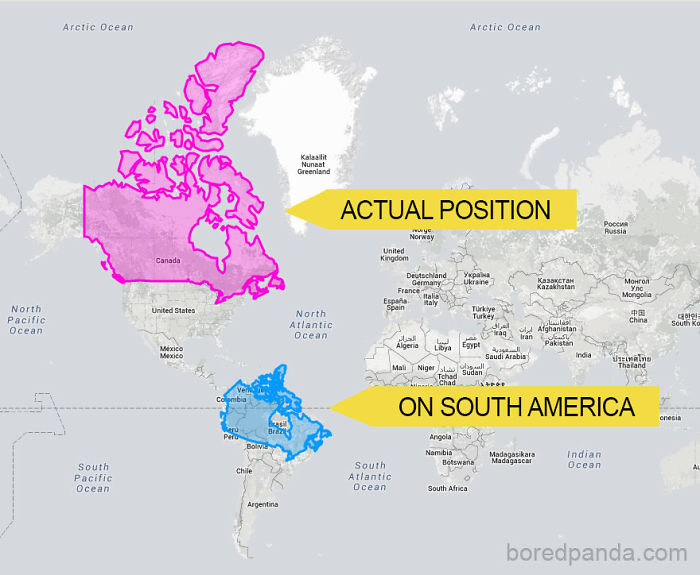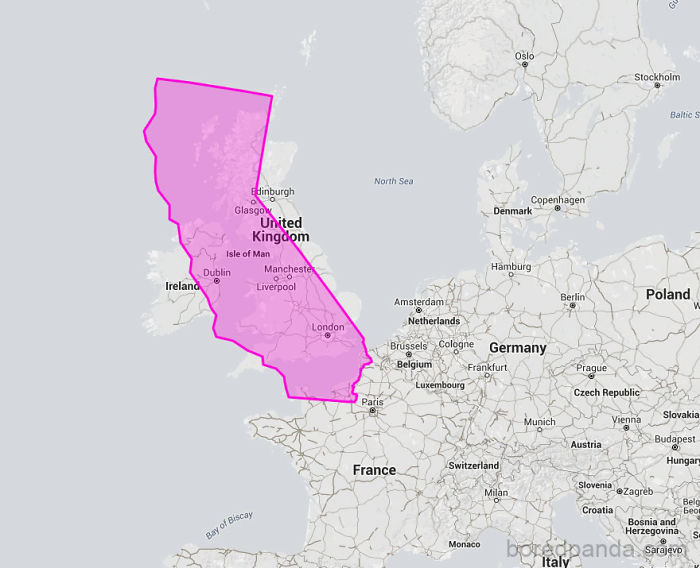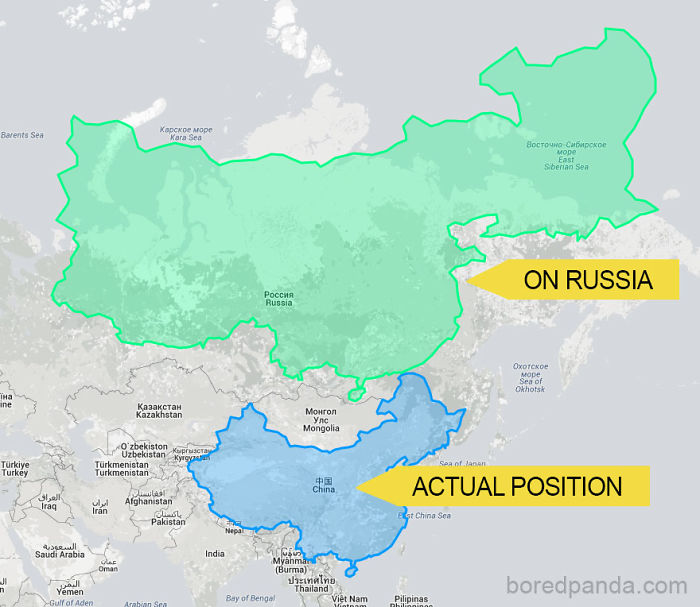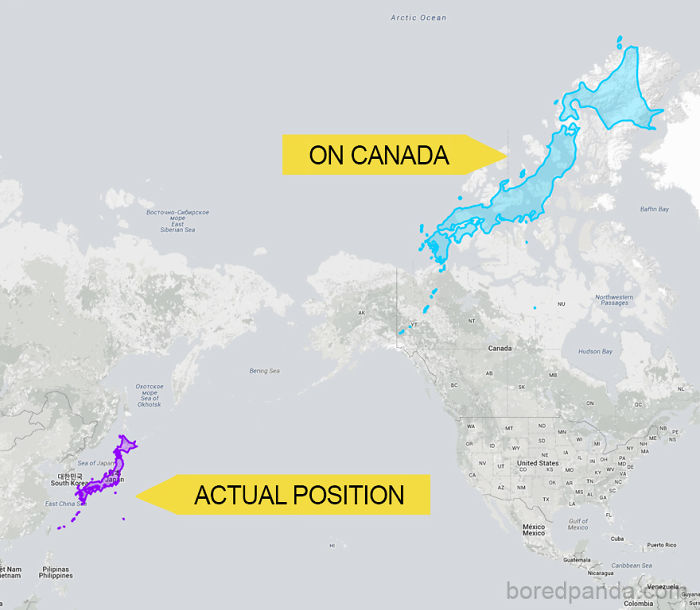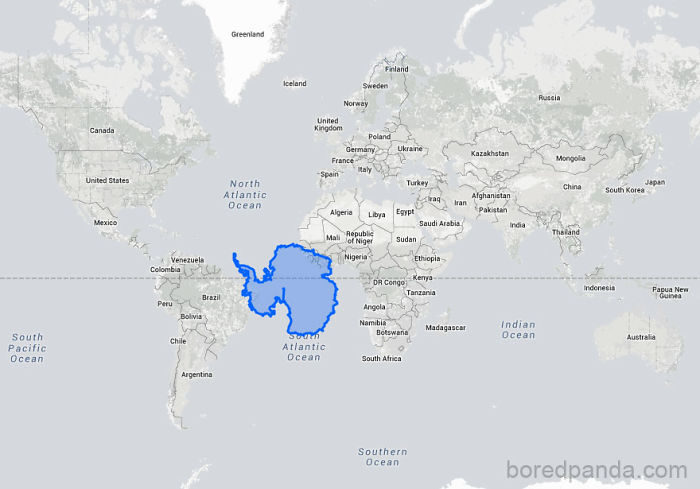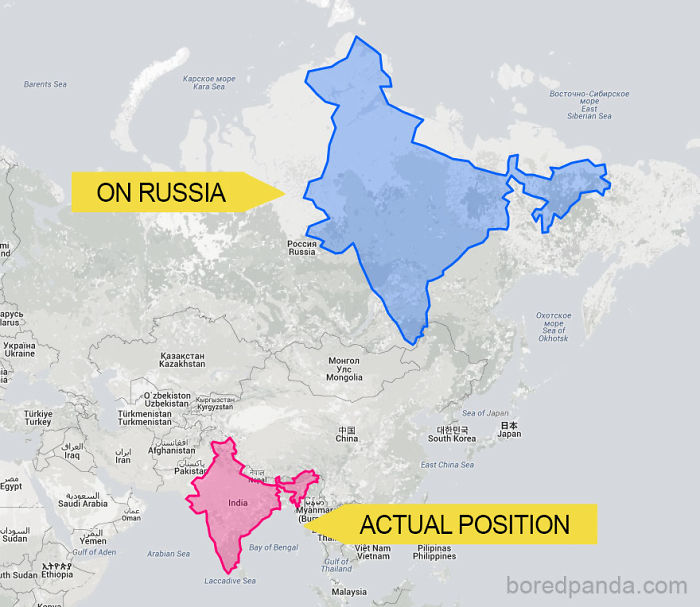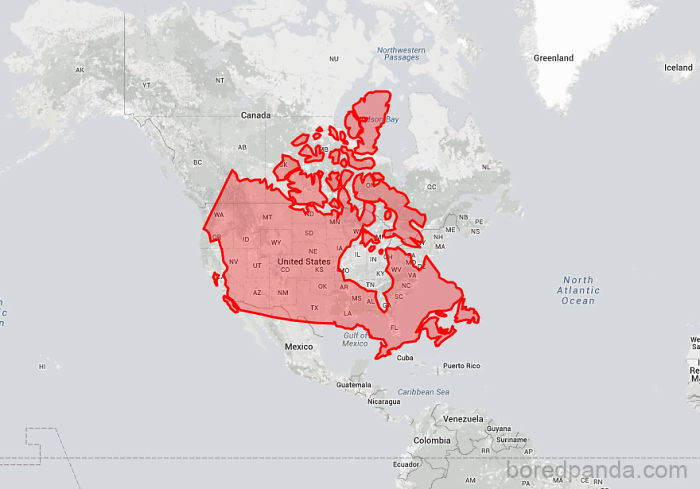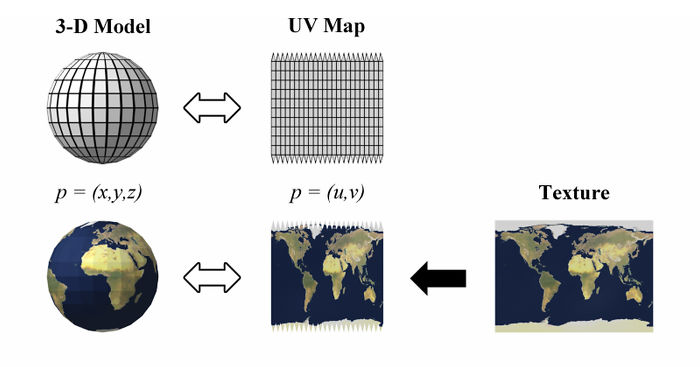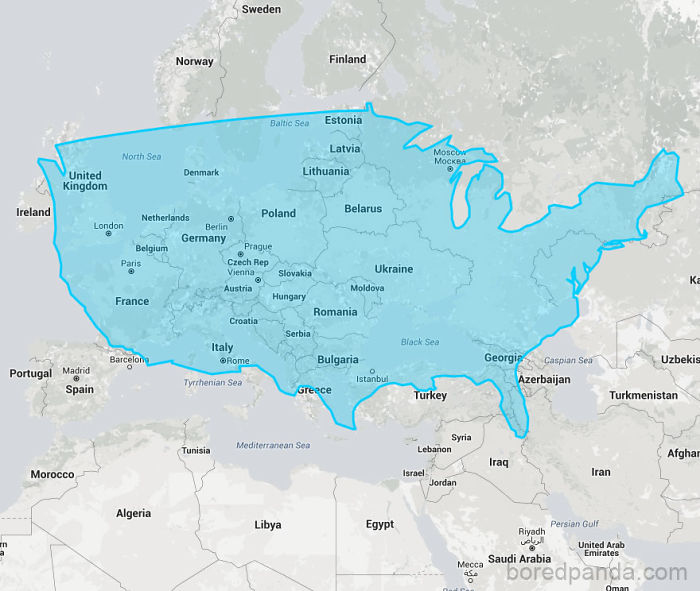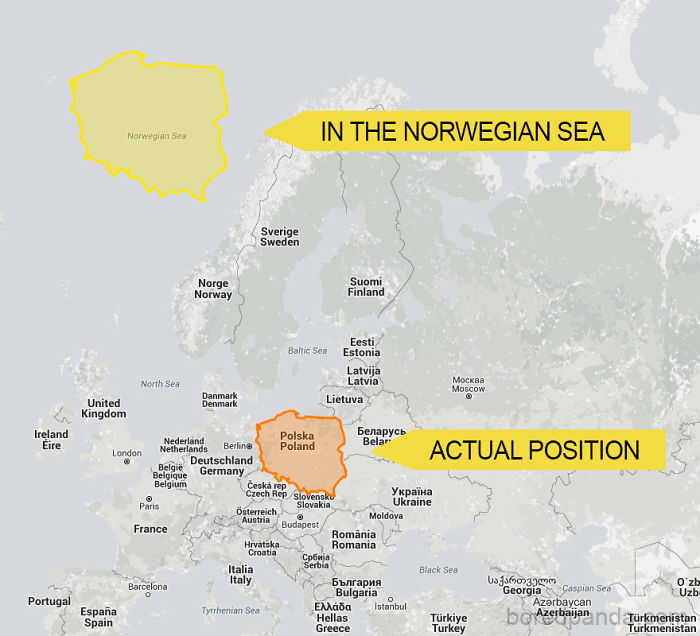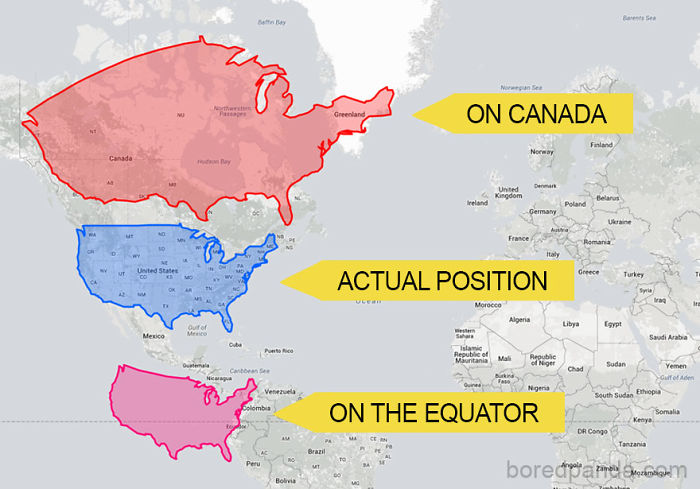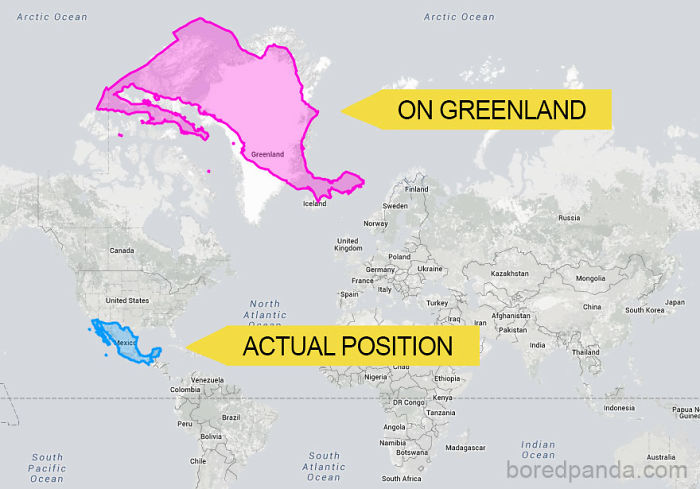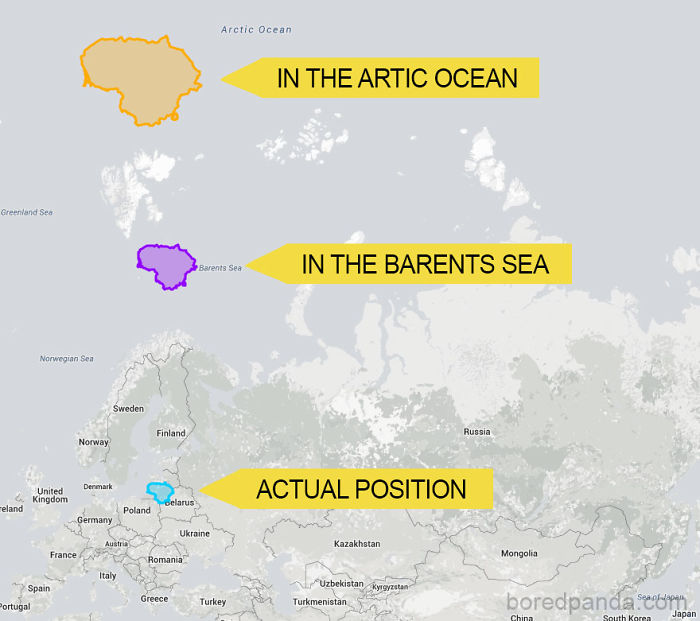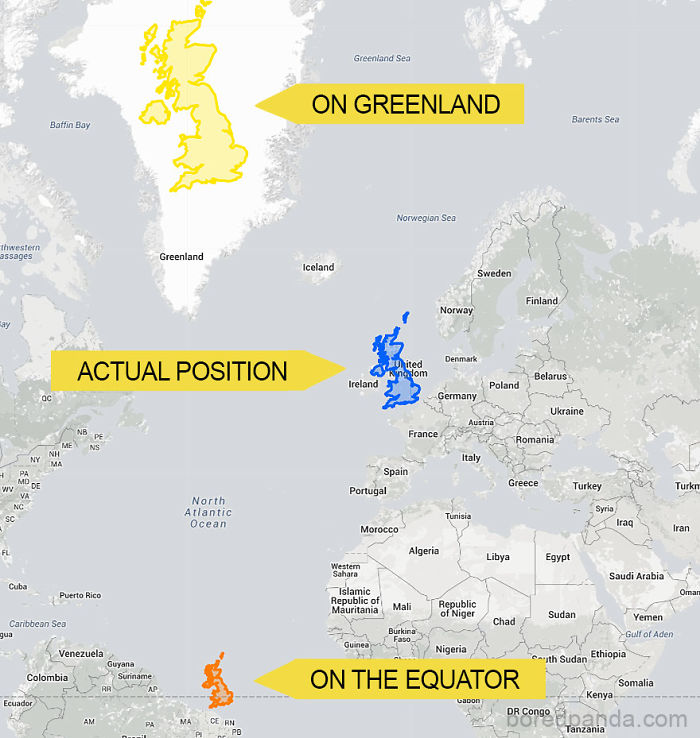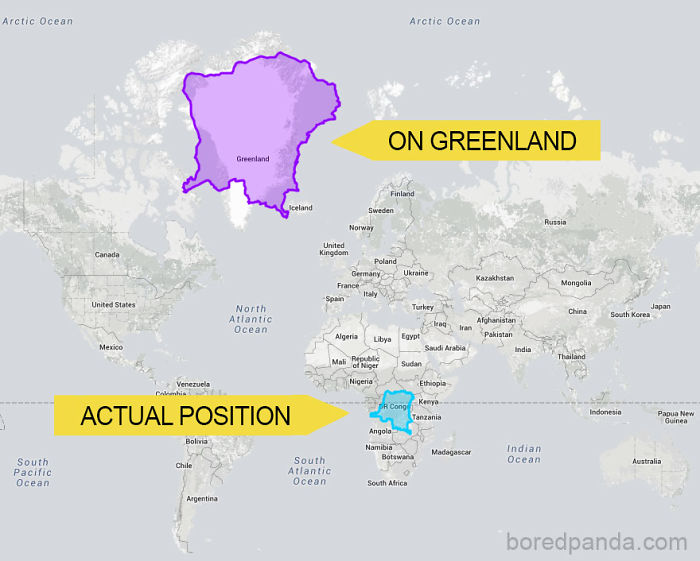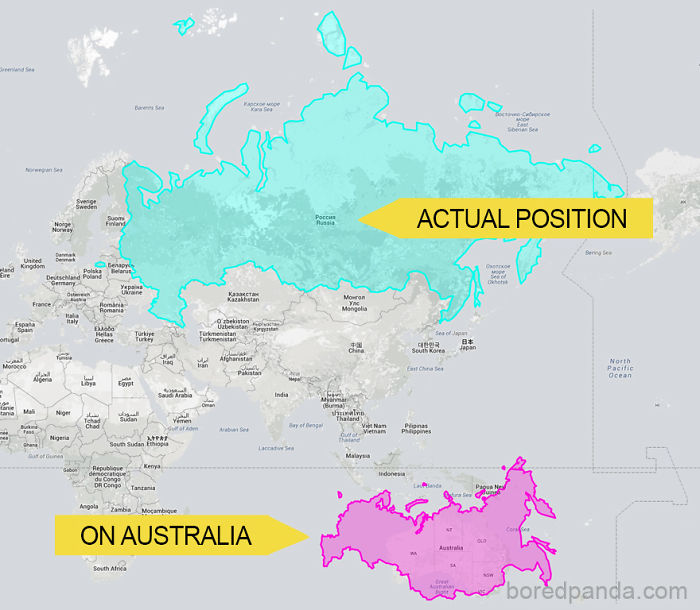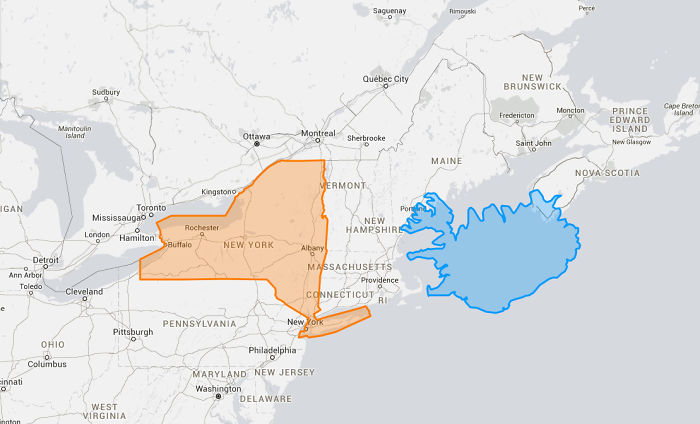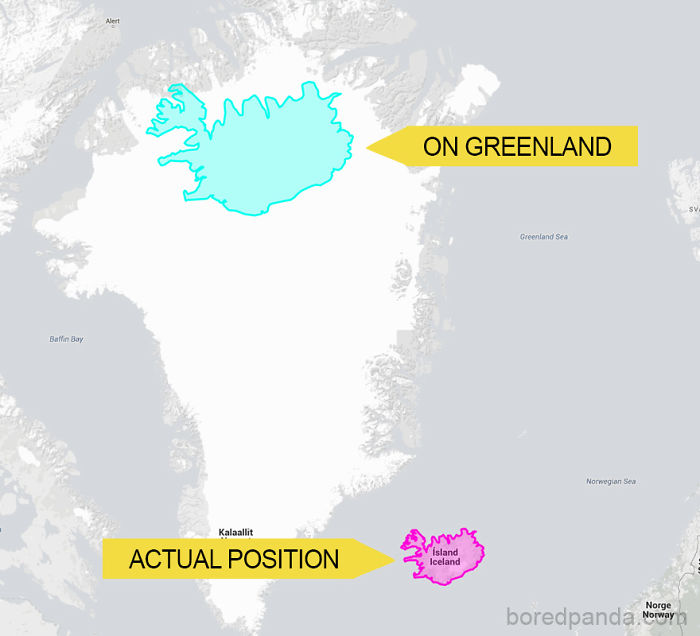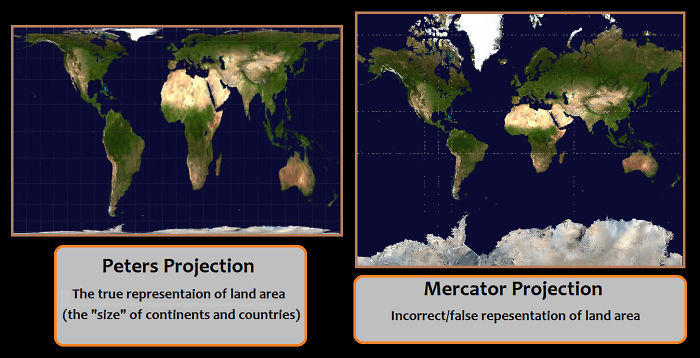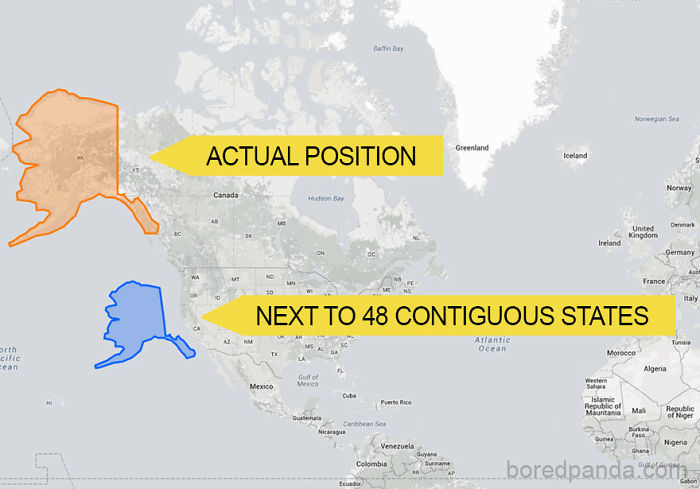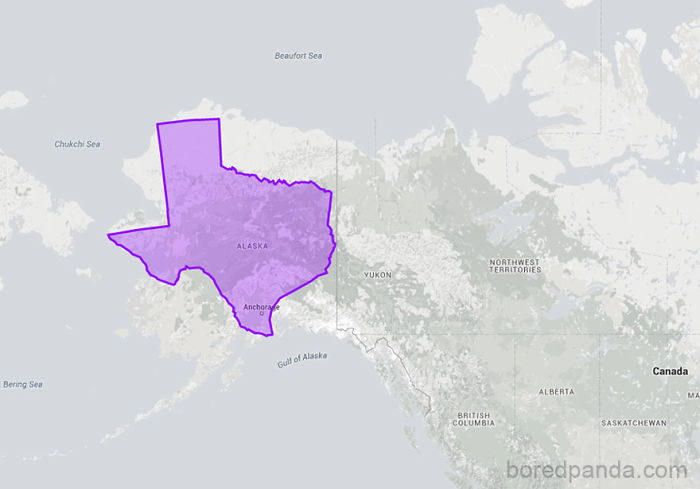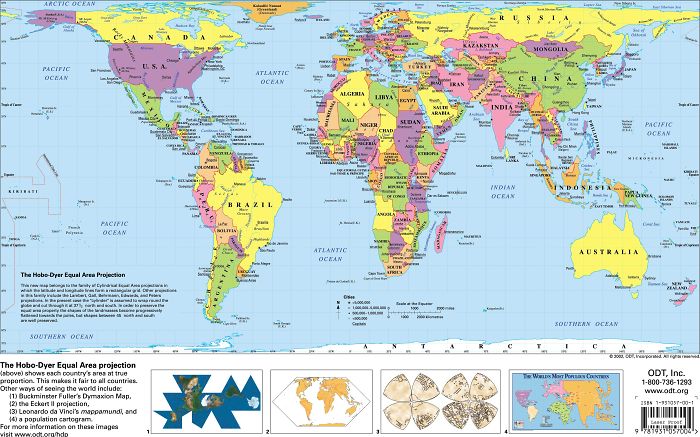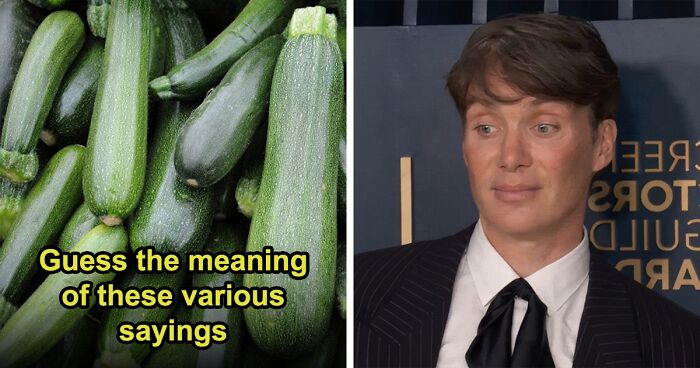Ever wondered why Greenland looks as big as Africa on the map? It’s because of something called the Mercator projection. Putting a 3-D planet on a two-dimensional world map was a challenge for early cartographers. So, a Flemish geographer and cartographer named Gerardus Mercator came up with a solution for the most accurate world map.
In 1569, he designed an atlas that could be accurately used for navigation purposes. Still, the downside was that his system distorted the size of objects depending on their position relative to the equator.
Because of this, landmasses like Antarctica and Greenland appear much bigger than they actually are. Though there are around 40 types of map projections, from conical to polyhedral and retroazimuthal, depicting the true size of the world, this one is still used the most because of its convenience and simplicity, even by Google Maps. None of these projections can be titled the real world map because they all depict the same Earth through a different lens.
So, what does the real-world map look like? To show how incorrect our understanding of countries by size is, a website called thetruesize.com lets you move land masses into different locations. This helps you understand the true size of countries.
We at Bored Panda played a bit with this tool, and what we found will change your perspective on our planet’s geography. The website lets you juxtapose two countries together to compare their relative size.
Here’s what the real size of countries looks like.
This post may include affiliate links.

 Dark Mode
Dark Mode 

 No fees, cancel anytime
No fees, cancel anytime 




